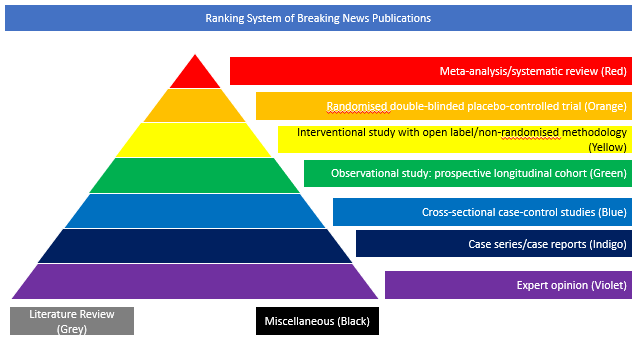Cross-sectional case-control studies (Blue)
Reports of Guillain-Barré syndrome (GBS) have emerged during the COVID-19 pandemic. This epidemiological and cohort study sought to investigate any causative association between COVID-19 infection and GBS. The epidemiology of GBS cases reported to the UK National Immunoglobulin Database was studied from 2016 to 2019 and compared to cases reported during the COVID-19 pandemic. Data were stratified by hospital trust and region, with numbers of reported cases per month. UK population data for COVID-19 infection were collated from UK public health bodies. In parallel, but separately, members of the British Peripheral Nerve Society prospectively reported incident cases of GBS during the pandemic at their hospitals to a central register. The clinical features, investigation findings and outcomes of COVID-19 (definite or probable) and non-COVID-19 associated GBS cases were compared. The incidence of GBS treated in UK hospitals from 2016 to 2019 was 1.65–1.88 per 100 000 individuals per year. In 2020, GBS and COVID-19 incidences varied between regions and did not correlate with one another (r = 0.06, 95% confidence interval: −0.56 to 0.63, P = 0.86). GBS incidence fell between March and May 2020 compared to the same months of 2016–19. In an independent cohort study, 47 GBS cases were reported (COVID-19 status: 13 definite, 12 probable, 22 non-COVID-19). There were no significant differences in the pattern of weakness, time to nadir, neurophysiology, CSF findings or outcome between these groups. Intubation was more frequent in the COVID-19 affected cohort (7/13, 54% versus 5/22, 23% in COVID-19-negative) likely related to COVID-19 pulmonary involvement. Although it is not possible to entirely rule out the possibility of a link, this study found no epidemiological or phenotypic clues of SARS-CoV-2 being causative of GBS. GBS incidence has fallen during the pandemic, which may be the influence of lockdown measures reducing transmission of GBS inducing pathogens such as Campylobacter jejuni and respiratory viruses.
DOI: https://doi.org/10.1093/brain/awaa433













